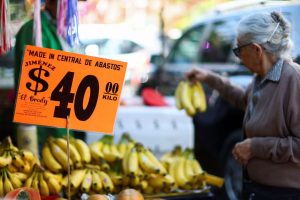New York () — In an extraordinary action to restore confidence in the US banking system, the Joe Biden government guaranteed this Sunday that clients of the bankrupt Silicon Valley Bank will have access to all their money starting this Monday.
In a related move, the government closed Signature Bank, a regional bank that has been teetering on the brink of collapse in recent days. Signature clients will receive similar treatment, guaranteeing that even uninsured deposits will be returned to them this Monday.
In a joint statement this Sunday, Treasury Secretary Janet Yellen; Federal Reserve Chairman Jerome Powell; and the president of the Federal Deposit Insurance Corporation, Martin J. Gruenberg; They said the FDIC will indemnify SVB and Signature customers. By insuring all deposits – including uninsured money held by customers in failing banks – the government hoped to prevent further bank runs and help businesses that deposited large sums in banks to continue paying payrolls and financing their operations.
The Federal Reserve will also make additional funds available to eligible financial institutions to prevent runaways from similar banks in the future.
“Monday is sure to be a stressful day for many in the regional banking sector, but today’s action dramatically reduces the risk of further contagion,” Jefferies analysts Thomas Simons and Aneta Markowska said in a note to clients Sunday morning. evening.
Wall Street investors were relieved by the government intervention. Dow futures rose nearly 300 points, or 0.9%, late on Sunday. S&P 500 and Nasdaq futures rose 1.3%. Markets had fallen more than 3% on Thursday and Friday as investors feared more bank failures and systemic risk to the technology sector.
According to regulators, US taxpayers will not have to pay for either facility. But shareholders and holders of unsecured corporate bonds will not be protected by the regulators’ plan.
“The US banking system remains resilient and on a solid footing, largely due to reforms that were made after the (2008) financial crisis, which ensured better safeguards for the banking sector,” said the regulators. “Those reforms, combined with today’s actions, demonstrate our commitment to take the necessary steps to ensure that depositors’ savings remain safe.”
The Federal Reserve’s new Bank Term Funding Program is designed to prevent the collapse of the next SVB.
In its effort to curb inflation, the Fed hiked interest rates to a record pace last year. That means the ultra-low-interest Treasuries that banks were investing in just a couple of years ago plummeted in value. The FDIC reported that US banks are sitting on $620 billion of unrealized losses.
The SVB sold billions of dollars of those securities at steep losses last week to raise enough cash to pay deposit withdrawals from its clients. That worrying signal triggered a bank run that bankrupted the SVB on Friday.
To prevent a repeat at another bank, the Federal Reserve said it will offer banks loans of up to a year in exchange for US Treasury bonds and mortgage-backed securities that have plummeted in value. The Federal Reserve will maintain the original value of the debt for the banks that accept the loans.
And, as it did during the pandemic, the Treasury will also provide $25 billion in credit protection to insure banks’ losses. This should help banks easily access cash when they need it.
In the words of Dan Ives of Wedbush Securities: “The Federal Reserve has put a lock on the SVB disaster and averted a crisis of epic proportions for the banking sector, a much-needed move to avoid contagion to the banking sector and to consumer confidence.” That being said, Street knows there’s never just one roach and investors will focus on other regional banks that may need to bolster their capital.”
US regulators worked through the weekend on the bottom-up plan after SVB’s shocking and rapid collapse late last week. Treasury, Federal Reserve and FDIC officials have worked with the Biden administration over the past two days to develop the facility.
Federal officials spent the weekend pushing for a sale of SVB. The FDIC opened an auction this weekend for bids to acquire the bank, the Treasury Department said at a briefing Sunday with lawmakers from the California branch, two sources familiar with the briefing told .
By insuring deposits, the US government tries to avoid two potentially risky scenarios for the consequences of bank failure, both of which have dire consequences: Other banks with profiles similar to those of SVB and Signature could be next to fail if clients lose faith that they will have enough cash to fund their deposits. And tech companies that kept their cash in SVB could go under if they couldn’t pay payroll or fund their operations with the $250,000 of FDIC-insured account deposits.
At the end of last year, SVB had $151.5 billion in uninsured deposits, $137.6 billion of which belonged to US clients. On Thursday, clients withdrew $42 billion from Silicon Valley Bank, leaving the bank with a $1 billion negative cash balance, the company said in a regulatory filing.
Yellen said in an interview with CBS on Sunday that the possibility of bailing out Silicon Valley Bank was not being considered.
“Let me make it clear that during the financial crisis, there were investors and owners of large systemic banks that were bailed out … and the reforms that have been put in place mean we’re not going to do that again,” Yellen told CBS. “But we care about depositors and we are focused on trying to meet their needs.”



![[Img #74675]](https://thelatestnews.world/wp-content/uploads/2024/12/They-discover-a-new-class-of-X-ray-sources-in-the-150x150.jpg)









